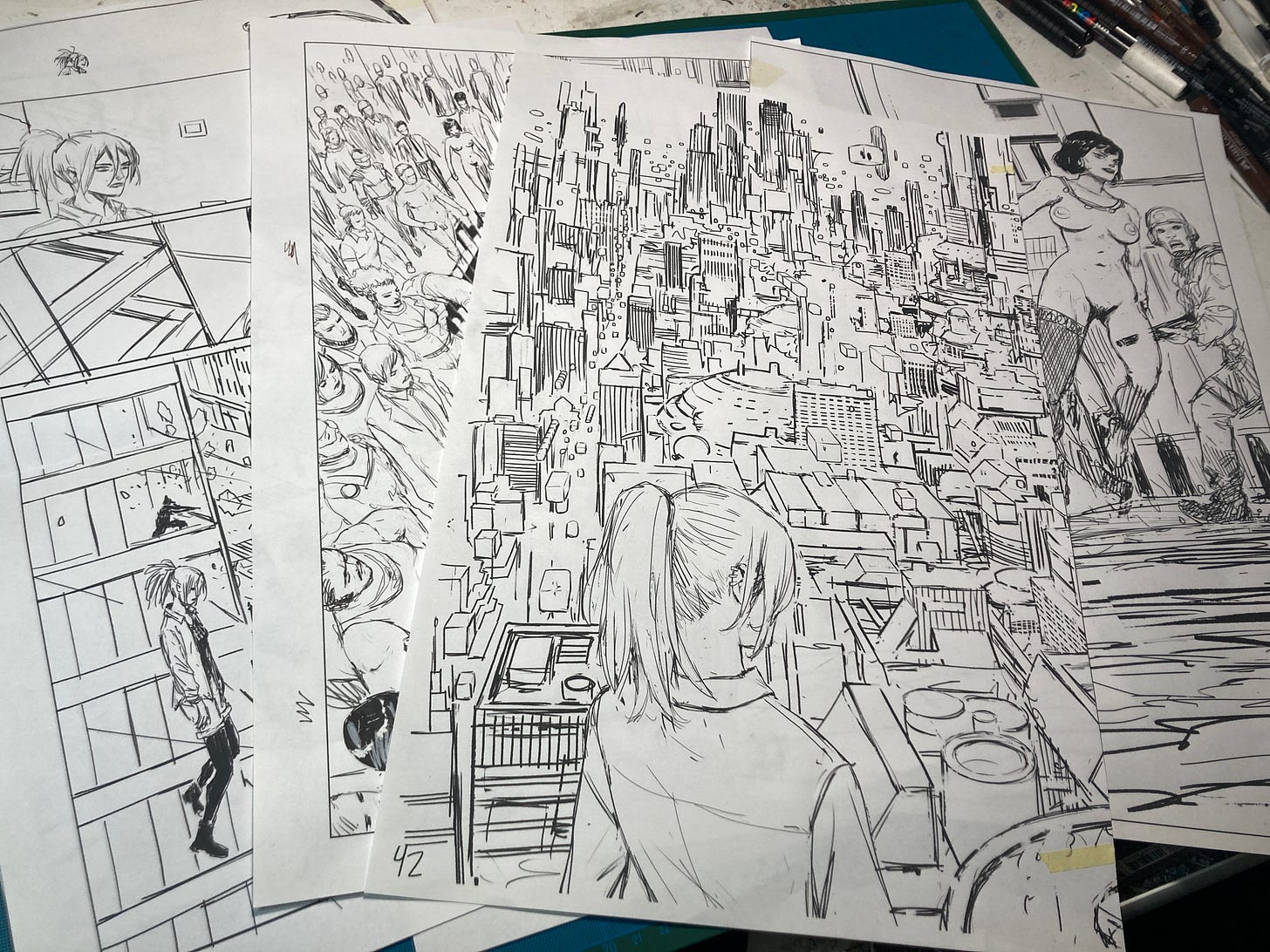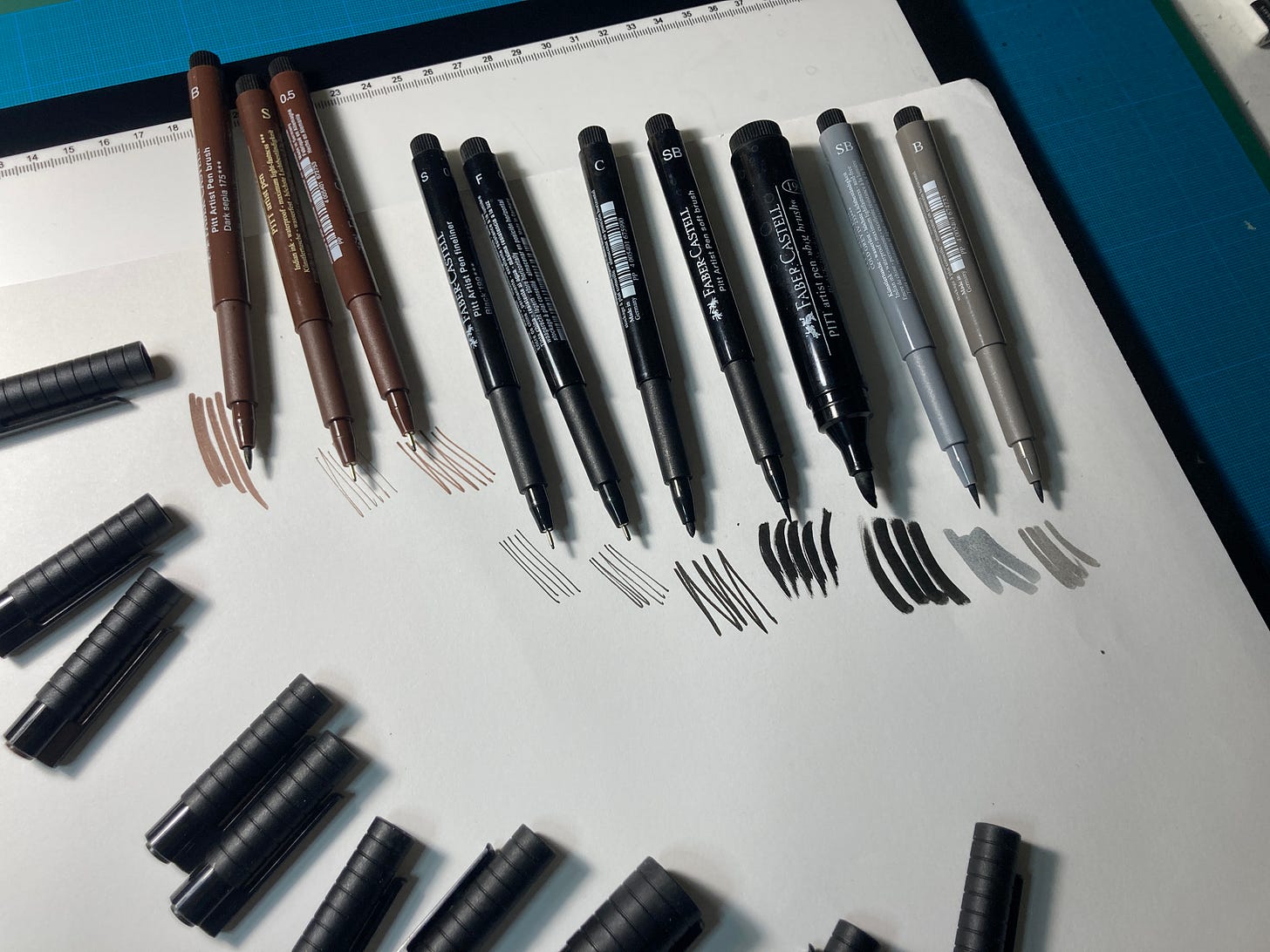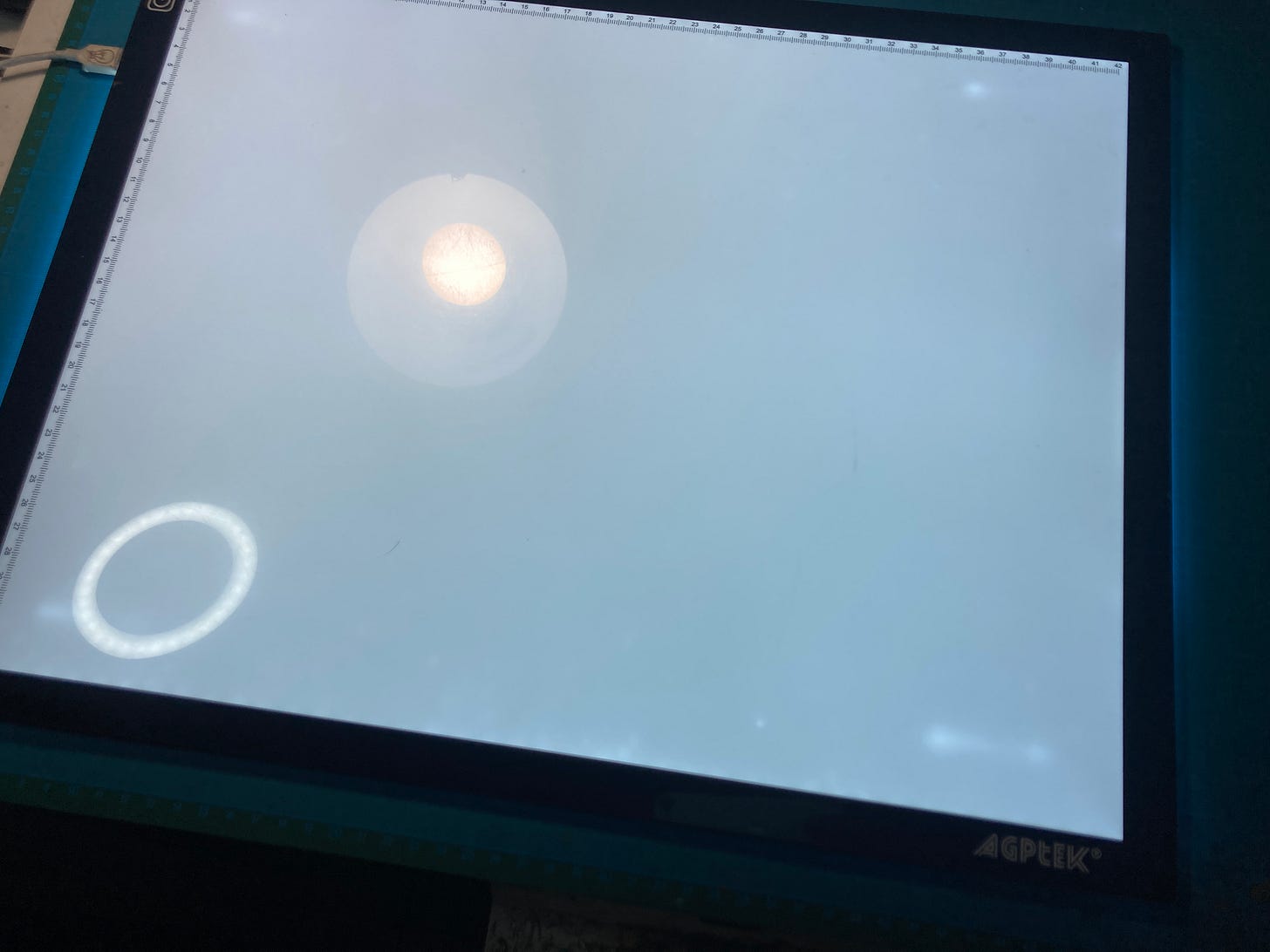Comics Artopsy #5
Ink clot diagnosis
Hello everyone,
Welcome to the next section of Comics Artopsy. Everyone had a great week?
After a small detour via live model sketches and cover art, let’s dig deeper with some proper comics page craft.
The last time I discussed comics pages, I elaborated about pencil work which I mostly do digitally these days, primarily for time saving reasons. So, once I have my fully pencilled page ready, I print it on a large printer and use a lightbox to ink on a good watercolor paper. I need the good paper because the same inked page will be coloured later on the same paper.
I hope everyone is following. It will be easier to understand the process with some visuals. Here are a bunch of my printed penciled pages:
This is when I’m working on the inks through the lightbox (small spoiler from this week’s pages).
I used to work with traditional brushes and nibs for inking. In recent years, I moved to using the much more handy markers. I’m using all sorts of them. My favourite brand is Faber-Castell Pitt markers. They make them in many sizes and shapes. The pigment is water-resistant (remember that I colour over them afterward) and their lightfastness is as good as traditional India ink. That’s also important when selling original artwork. I remember the old generations of markers tended to disappear with the combined effects of light and time.
A few years ago, we had the chance to see these new LED lightboxes coming to market. The old ones were very bulky, they worked with neon tubes and sometimes had overheating issues that would make the paper curb.
This amazing technological evolution was more than welcomed. I often say that today’s newcomers in comics have all the best materials and networks ready for them. I remember working on early versions of Photoshop, when saving a file would take ages, then using a fax machine to send layouts to the editors. Thankfully, those days are long gone.
If you’re interested, here are two new process videos of exactly how it all happens…
[Brian here, jumping in to say that these videos absolutely melted my brain. I don’t know how many contemporary artists are making comics in this hybrid analog/digital fashion, but the results are obviously extraordinary. Anyway, the following videos, behind-the-scenes images, and the ensuing chat for you aspiring/working artists to ask Niko anything, are exclusively for our generous paid subscribers in The Tower, but you’re welcome to join us anytime! Either way, we’ll see you back here on Monday as Niko pours all of this brilliance into one of the craziest double-page spreads ever.]





